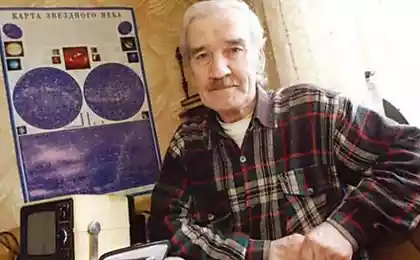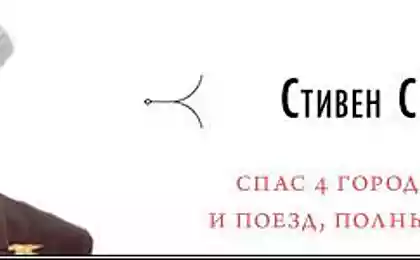640
"A guy named Arkhipov saved the world"! About the present Soviet superhero
"A guy named Arkhipov saved the world", — said the Director of the national security Archive Thomas Blanton in 2002 at a conference in Havana, on the Cuban missile crisis. Declassified documents from the American side showed that in 1962, nuclear war was much closer than everyone thought.

Photo source: OK.mediaWebsite publishes a fascinating article about the "Soviet superhero" who had a significant impact on the course of history.
The childhood of the Future hero superhero Arkhipov, Vasili Alexandrovich was born in 1926 in a peasant family. He grew up in a small village Svarcova in the Moscow region. After 9th grade he entered the Leningrad naval training school, and later, in 1942 he began a preparatory course in the Pacific higher military-sea school.
For Vasily Arkhipov war began in 1945. Then he participated for the first time in real combat against Japan. The cadet was entrusted the role of back-up commander of BCH-1 (combat navigation part) on the minesweeper (ship that destroys sea mines and holds other vessels through minefields) in the Pacific ocean. When the war ended, Arkhipova together with other cadets was transferred to Baku, where he studied until 1947. During the service to lift the ban on izborsky Black sea, Northern and Baltic.

On Board of Hiroshima In 1961 Vasily Arkhipov came to the first Soviet nuclear submarine K-19 backup commander. In the Navy it was called Hiroshima — for repeated failure. On 4 July the boat was near the Norwegian island of Jan Mayen, when on the right reactor accident. After half an hour began to increase the gamma activity, and when the reactor was hit by cold water, the radiation spiked. A number of officers rebelled, demanding to immediately flood the boat and the crew to land on the nearest island. Commander zateev ordered to drown all small arms, leaving guns only for true sailors. Among them was the question, then already a captain of the 2nd rank. A day after the accident, the crew marooned on a diesel submarine, and later transplanted to the destroyers. All staff received a dose of radiation, and 8 people died in hospital.
On the brink of war a year later, the war seemed imminent. By 1962 the United States established in Turkish missiles "Jupiter", which in 10 minutes could reach Moscow and major industrial centers of the USSR. In response, Soviet strategists decided to place its own missiles in Cuba. The USSR would have needed about 20 minutes to launch a nuclear strike on Washington and main air bases of the United States. The situation is tense: States detected located in Cuba, anti-aircraft and ballistic missiles.
1 Oct 1962 as part of operation "Anadyr" 4 Soviet diesel boats set out from the Polar sea to the shores of Cuba. In the Barents sea on Board the loaded torpedoes, including one nuclear. Such a torpedo in just few minutes could reach US territory — and it would mean the beginning of a nuclear war. No instructions about the use of weapons is not received. Even the Admiral Vitali Fokin, while the Deputy commander of the Navy, was not able to answer the question Arkhipova, given the day before: "it is Not clear, comrade Admiral, why do we have nuclear weapons. When and how should we use it?" Vasili Arkhipov is hit on the submarine B-59 as one of the three senior officers. The crew had to overcome a naval blockade around Cuba, the US and establish a base of submarines at the Northern shore of the island.
On 27 October, the submarine under the command of Valentin Savitsky approached the coast of Cuba. Anti-Soviet military forces were ready to meet submarines: first, they were looking for Norwegian seaplanes, then joined the British anti-submarine aircraft "Shackleton" and the American patrol "Neptune". But until the Sargasso sea they are unable to detect Soviet submarines.
Against B-59 were the aircraft carriers led the 260-meter-long "Randolph". The sensors of the submarine showed 14 goals. The Soviet submarine began to maneuver, but long enough to evade the Americans failed. B-59 is clamped in a ring and began to attack. In the course went underwater grenades that went off right next to the Board. Captain 2nd rank Vadim Orlov, who was aboard the submarine as radioradio, recalled: "it was like sitting in an iron barrel, which pounded with a sledgehammer. The situation for the crew is an unusual, if not shocking".
Sink or swim Situation on the submarine was critical. The battery drained to almost zero in order not to waste energy, leaving only emergency lighting. The cooling system was not working: it had to pour fresh water due to a failed diesel. The temperature in the compartments has reached 50 degrees, and in the electromotive Department and all 60. The crew stripped to underwear. The content of carbon dioxide reached nearly fatal to people level. The watch began to lose consciousness, falling one after the other. To charge the batteries, it was necessary to emerge, but upstairs was waiting for the carriers. According to Orlov, the Americans floated the depth charges. Fuse these boats works when hitting the hull of a boat.

Valentin Savitsky lost his temper. To contact the Main headquarters did not happen. At that time, the key to nuclear torpedoes was the commander, but realizing the impact that he could only with approval of the three senior officers on Board. In addition, the order had to be sure to get the top: for the use of conventional torpedoes had a "good" commander in chief of the Navy, and for nuclear — the Secretary of defense. The tired commander ordered a nuclear torpedo in a combat situation. The unknown frightened: and suddenly up there, the war has already started, and they hesitate? "We are now for him to Dodge! Themselves die, they'll sink all but the Navy did not disgrace!" cried Sawicki.
The world stood on the brink of a Third world war. People are confused, under water, almost without light and air, could not decide whether to start them with a torpedo. But in the end they changed their mind. What kind of role he played in making this decision, Vasili Arkhipov, hard to say. According to one version, he personally stopped Savitsky, putting on the signals submitted by American ships. The stories of Vadim Orlov, vs was both the senior officer. However, the IMF has insisted on the abolition of nuclear attack.
After surfacing After a short discussion, we decided to climb. The sonar sent out a signal "POPs up submarine". In the early morning resurfaced and immediately began to ventilate the premises and to charge batteries. To escape from the ring failed: American ships on all sides have put the spotlight on the Soviet submarine. Sawicki ordered to raise the Soviet flag and to give a message by semaphore: "the Ship belongs to the Union of Soviet Socialist Republics. Stop your provocative actions. The commander".
A submarine was reported in the headquarters that the Americans forced them to emerge. As it turned out, this was the second Soviet submarine that had to rise. While B-59 began firing anti-submarine aircraft "Trekker" at a distance of only 20-30 meters. Then the submarine was under the gun destroyers. From the Chief of staff was instructed to break away from the Americans and sail to Bermuda.

Submarine with dead batteries was not ready to leave from prosecution. But came to the aid of a case: "Randolph" burned tube in one of the boilers, and he had to leave for repairs. The aircraft followed the B-59, became less. The next morning the Americans decided to take on one of the destroyers made a little jazz concert with dancing. Soviet sailors Savitsky ordered not to submit the form and dignity at all times. When the officer of the deck began to beat foot rhythm to the tunes of jazz, the commander immediately made him step down.
What happened to the boat? The evening in the "convoy" of Soviet submarines remained only two destroyers. Perhaps the Americans thought that the B-59 going back home. But Sawicki with Arkhipov devised a plan which would give the opportunity to outwit the enemy and go to the desired position. From time to time destroyers checked if a boat using hydroacoustic installations and searchlights. But the vigilance they have already lost. Podgadat moment when the Americans distracted, the submarine quickly submerged to a depth of 150 meters. A few minutes, the destroyers did not understand. Besides in the fence of the Soviet logging built about the purpose of that immersion were to remain on the surface and knock the Americans off.

The submarine almost failed at depth and at great speed moved in the direction of Bermuda. For the commander it was a big risk: the battery is barely enough for four hours. But Savitsky was hoping, if you can tear yourself away, get up and charge at night. The plan worked: the Americans rushed and could not understand where the missing Soviet submarine.
We cocked hat So the whole day the world stood on the brink of nuclear war. Later, during the analysis of the situation in Moscow, Deputy defense Minister Andrei Antonovich Grechko asked the commanders of submarines, caught in a trap in the Sargasso sea: "Why didn't you come up? Why don't the Americans threw grenades?" The old Russian shapkozakidatelstvo almost turned into a disaster. However, thanks to the determination and judgment Vasily Arkhipov and perseverance of personnel, the trouble failed to pass. Command of the Navy reacted to the events off the coast of Cuba succinctly: "Nobody to encourage and nobody to punish." Remained day nenasala the Third world in secret, and his heroes — in the shadows.
via OK.media/articles/31508321/

Photo source: OK.mediaWebsite publishes a fascinating article about the "Soviet superhero" who had a significant impact on the course of history.
The childhood of the Future hero superhero Arkhipov, Vasili Alexandrovich was born in 1926 in a peasant family. He grew up in a small village Svarcova in the Moscow region. After 9th grade he entered the Leningrad naval training school, and later, in 1942 he began a preparatory course in the Pacific higher military-sea school.
For Vasily Arkhipov war began in 1945. Then he participated for the first time in real combat against Japan. The cadet was entrusted the role of back-up commander of BCH-1 (combat navigation part) on the minesweeper (ship that destroys sea mines and holds other vessels through minefields) in the Pacific ocean. When the war ended, Arkhipova together with other cadets was transferred to Baku, where he studied until 1947. During the service to lift the ban on izborsky Black sea, Northern and Baltic.

On Board of Hiroshima In 1961 Vasily Arkhipov came to the first Soviet nuclear submarine K-19 backup commander. In the Navy it was called Hiroshima — for repeated failure. On 4 July the boat was near the Norwegian island of Jan Mayen, when on the right reactor accident. After half an hour began to increase the gamma activity, and when the reactor was hit by cold water, the radiation spiked. A number of officers rebelled, demanding to immediately flood the boat and the crew to land on the nearest island. Commander zateev ordered to drown all small arms, leaving guns only for true sailors. Among them was the question, then already a captain of the 2nd rank. A day after the accident, the crew marooned on a diesel submarine, and later transplanted to the destroyers. All staff received a dose of radiation, and 8 people died in hospital.
On the brink of war a year later, the war seemed imminent. By 1962 the United States established in Turkish missiles "Jupiter", which in 10 minutes could reach Moscow and major industrial centers of the USSR. In response, Soviet strategists decided to place its own missiles in Cuba. The USSR would have needed about 20 minutes to launch a nuclear strike on Washington and main air bases of the United States. The situation is tense: States detected located in Cuba, anti-aircraft and ballistic missiles.
1 Oct 1962 as part of operation "Anadyr" 4 Soviet diesel boats set out from the Polar sea to the shores of Cuba. In the Barents sea on Board the loaded torpedoes, including one nuclear. Such a torpedo in just few minutes could reach US territory — and it would mean the beginning of a nuclear war. No instructions about the use of weapons is not received. Even the Admiral Vitali Fokin, while the Deputy commander of the Navy, was not able to answer the question Arkhipova, given the day before: "it is Not clear, comrade Admiral, why do we have nuclear weapons. When and how should we use it?" Vasili Arkhipov is hit on the submarine B-59 as one of the three senior officers. The crew had to overcome a naval blockade around Cuba, the US and establish a base of submarines at the Northern shore of the island.
On 27 October, the submarine under the command of Valentin Savitsky approached the coast of Cuba. Anti-Soviet military forces were ready to meet submarines: first, they were looking for Norwegian seaplanes, then joined the British anti-submarine aircraft "Shackleton" and the American patrol "Neptune". But until the Sargasso sea they are unable to detect Soviet submarines.
Against B-59 were the aircraft carriers led the 260-meter-long "Randolph". The sensors of the submarine showed 14 goals. The Soviet submarine began to maneuver, but long enough to evade the Americans failed. B-59 is clamped in a ring and began to attack. In the course went underwater grenades that went off right next to the Board. Captain 2nd rank Vadim Orlov, who was aboard the submarine as radioradio, recalled: "it was like sitting in an iron barrel, which pounded with a sledgehammer. The situation for the crew is an unusual, if not shocking".
Sink or swim Situation on the submarine was critical. The battery drained to almost zero in order not to waste energy, leaving only emergency lighting. The cooling system was not working: it had to pour fresh water due to a failed diesel. The temperature in the compartments has reached 50 degrees, and in the electromotive Department and all 60. The crew stripped to underwear. The content of carbon dioxide reached nearly fatal to people level. The watch began to lose consciousness, falling one after the other. To charge the batteries, it was necessary to emerge, but upstairs was waiting for the carriers. According to Orlov, the Americans floated the depth charges. Fuse these boats works when hitting the hull of a boat.

Valentin Savitsky lost his temper. To contact the Main headquarters did not happen. At that time, the key to nuclear torpedoes was the commander, but realizing the impact that he could only with approval of the three senior officers on Board. In addition, the order had to be sure to get the top: for the use of conventional torpedoes had a "good" commander in chief of the Navy, and for nuclear — the Secretary of defense. The tired commander ordered a nuclear torpedo in a combat situation. The unknown frightened: and suddenly up there, the war has already started, and they hesitate? "We are now for him to Dodge! Themselves die, they'll sink all but the Navy did not disgrace!" cried Sawicki.
The world stood on the brink of a Third world war. People are confused, under water, almost without light and air, could not decide whether to start them with a torpedo. But in the end they changed their mind. What kind of role he played in making this decision, Vasili Arkhipov, hard to say. According to one version, he personally stopped Savitsky, putting on the signals submitted by American ships. The stories of Vadim Orlov, vs was both the senior officer. However, the IMF has insisted on the abolition of nuclear attack.
After surfacing After a short discussion, we decided to climb. The sonar sent out a signal "POPs up submarine". In the early morning resurfaced and immediately began to ventilate the premises and to charge batteries. To escape from the ring failed: American ships on all sides have put the spotlight on the Soviet submarine. Sawicki ordered to raise the Soviet flag and to give a message by semaphore: "the Ship belongs to the Union of Soviet Socialist Republics. Stop your provocative actions. The commander".
A submarine was reported in the headquarters that the Americans forced them to emerge. As it turned out, this was the second Soviet submarine that had to rise. While B-59 began firing anti-submarine aircraft "Trekker" at a distance of only 20-30 meters. Then the submarine was under the gun destroyers. From the Chief of staff was instructed to break away from the Americans and sail to Bermuda.

Submarine with dead batteries was not ready to leave from prosecution. But came to the aid of a case: "Randolph" burned tube in one of the boilers, and he had to leave for repairs. The aircraft followed the B-59, became less. The next morning the Americans decided to take on one of the destroyers made a little jazz concert with dancing. Soviet sailors Savitsky ordered not to submit the form and dignity at all times. When the officer of the deck began to beat foot rhythm to the tunes of jazz, the commander immediately made him step down.
What happened to the boat? The evening in the "convoy" of Soviet submarines remained only two destroyers. Perhaps the Americans thought that the B-59 going back home. But Sawicki with Arkhipov devised a plan which would give the opportunity to outwit the enemy and go to the desired position. From time to time destroyers checked if a boat using hydroacoustic installations and searchlights. But the vigilance they have already lost. Podgadat moment when the Americans distracted, the submarine quickly submerged to a depth of 150 meters. A few minutes, the destroyers did not understand. Besides in the fence of the Soviet logging built about the purpose of that immersion were to remain on the surface and knock the Americans off.

The submarine almost failed at depth and at great speed moved in the direction of Bermuda. For the commander it was a big risk: the battery is barely enough for four hours. But Savitsky was hoping, if you can tear yourself away, get up and charge at night. The plan worked: the Americans rushed and could not understand where the missing Soviet submarine.
We cocked hat So the whole day the world stood on the brink of nuclear war. Later, during the analysis of the situation in Moscow, Deputy defense Minister Andrei Antonovich Grechko asked the commanders of submarines, caught in a trap in the Sargasso sea: "Why didn't you come up? Why don't the Americans threw grenades?" The old Russian shapkozakidatelstvo almost turned into a disaster. However, thanks to the determination and judgment Vasily Arkhipov and perseverance of personnel, the trouble failed to pass. Command of the Navy reacted to the events off the coast of Cuba succinctly: "Nobody to encourage and nobody to punish." Remained day nenasala the Third world in secret, and his heroes — in the shadows.
via OK.media/articles/31508321/
Here's how a couple of minutes to get rid of a cold. Simple and free!
19 facts you still don't know about cats!























